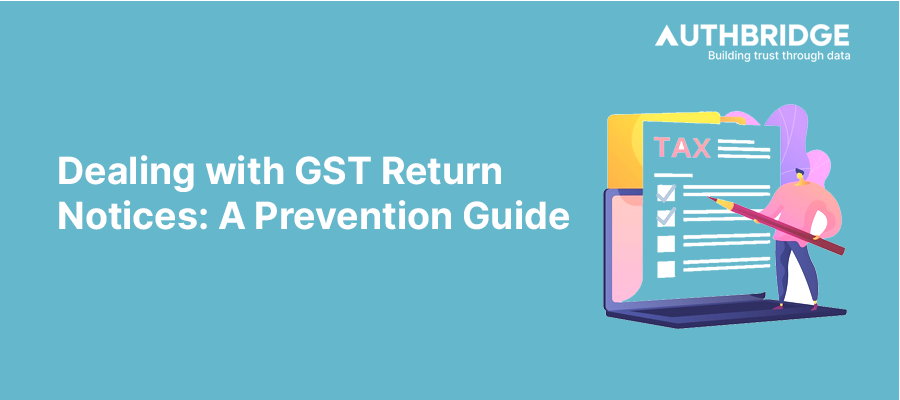The Ultimate Guide To Handling GST Return Notices: Prevention And Response Strategies

1. Understanding GST Notices
Introduction to GST Notices
GST notices are official communications sent by the tax authorities to businesses and taxpayers under the Goods and Services Tax (GST) regime. These notices serve various purposes, including seeking clarification, auditing, and enforcing compliance. Understanding the nature and types of notices is crucial for timely and appropriate responses.
Types of GST Notices
Several types of GST notices are issued for different compliance issues, including but not limited to:
- GSTR-3A: Notice for failure to furnish returns.
- CMP-05: Show cause notice for opting out of the composition scheme.
- REG-03: Verification notice during registration or amendment.
- REG-17: Show cause notice for cancellation of registration.
- DRC-01: Show cause notice for demand of tax.
Each type of notice requires a specific response and may involve submitting documents, providing explanations, or rectifying discrepancies in the GST filings.
2. Common Reasons for Receiving GST Notices
Discrepancies in Returns
One of the primary reasons businesses receive GST notices is due to discrepancies between the returns filed and the information available with the tax authorities. These discrepancies can arise from errors in reporting taxable transactions, mismatches in input tax credit claims, or inconsistencies in sales and purchase invoices reported.
Delayed Filing or Non-Filing
Failing to file GST returns on time or not filing them at all is a surefire way to attract notices from the GST department. The law mandates regular monthly or quarterly filings (depending on the business type), and any deviation from this schedule can lead to penalties and notices for non-compliance.
Mismatch in Input Tax Credit
A significant area of scrutiny under GST is the claim of input tax credit (ITC). Notices are often issued when there's a mismatch between the ITC claimed by the taxpayer and the details available through GSTR-2A/2B forms or other declarations by suppliers. Ensuring accurate and timely reconciliation of ITC claims with supplier declarations is crucial to avoid such notices.
3. Responding to GST Notices
Immediate Steps Upon Receiving a Notice
Upon receiving a GST notice, the first step is to carefully read and understand the issue raised. It's important to note the deadline for responding to the notice and immediately start gathering the required information and documents to address the concerns.
Documentation and Evidence Preparation
Prepare and organize all relevant documents and evidence that support your response to the notice. This may include tax invoices, bank statements, ledgers, contracts, and correspondence that can substantiate your claims or clarify the discrepancies.
Legal Recourse and Representation
For complex notices or where significant tax liabilities are involved, it may be prudent to seek legal advice or representation. Tax professionals or legal experts specializing in GST can provide valuable guidance on the best course of action and represent the business in communications with the tax authorities.
4. Preventive Measures and Best Practices
Regular Reconciliation of Returns
Regularly reconcile your GST returns with your books of accounts and the returns filed by your suppliers. This practice helps in identifying and rectifying any discrepancies proactively, reducing the likelihood of receiving notices.
Timely Filing and Payment
Ensure that all GST returns are filed and any tax dues are paid well within the prescribed deadlines. Setting up reminders and using GST compliance software can help in managing these deadlines effectively.
Maintaining Accurate Records
Maintain accurate and comprehensive records of all transactions, invoices, and tax payments. Proper record-keeping not only aids in compliance but also simplifies the process of responding to any notices received.
5. Case Studies: Successfully Handling GST Notices
Exploring case studies of businesses that have successfully navigated GST notices can provide practical insights into effective strategies for dealing with such challenges. These case studies often highlight the importance of timely action, accurate record-keeping, and professional guidance in resolving issues raised in GST notices.
By understanding the common reasons for receiving GST notices and adopting best practices for compliance, businesses can significantly reduce the risk of encountering such challenges. Proactive measures, along with a well-prepared response strategy, are key to effectively dealing with GST notices and ensuring smooth tax compliance.
Category

Abhinandan Banerjee
(Associate Manager - Marketing)
Abhinandan is a dynamic Product and Content Marketer, boasting over seven years of experience in crafting impactful marketing strategies across diverse environments. Known for his strategic insights, he propels digital growth and boosts brand visibility by transforming complex ideas into compelling content that inspires action.



